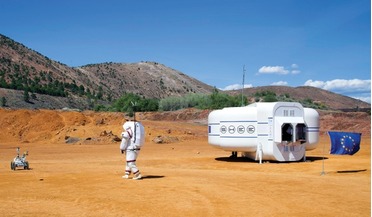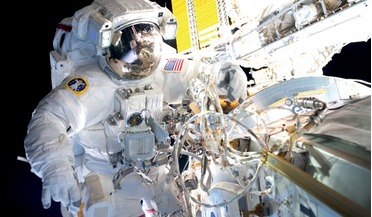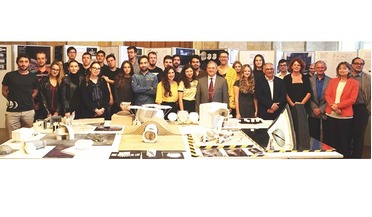 October 2016
Project MOONWALK
October 2016
Project MOONWALK
... and 2016, a number of technologies and technical systems were demonstrated and tested in two Earth-analogue simulations of Extra-Vehicular Activities (EVA) on the Moon and Mars. The simulated surface EVAs included egress and ingress from a planetary...
 April 2020
Protecting against the dangers of space radiation
April 2020
Protecting against the dangers of space radiation
... countermeasure regime? This is particularly important because, in upcoming missions, and especially those to the Moon, many extra-vehicular activities (EVAs) are foreseen. Astronauts will leave the relative safety of their Moon base for significant...
 October 2018
Developing wearable technologies for space and Earth
October 2018
Developing wearable technologies for space and Earth
... in preparing the crew for their operational responsibilities such as performing repair manoeuvres, extra-vehicular activities (EVAs) and intra-vehicular activities (IVAs). When integrated with the internal and external sensors discussed above, the...
 May 2020
Mixed reality in the design of space habitats
May 2020
Mixed reality in the design of space habitats
... actual spacecraft. Likewise, Shuttle astronauts used VR extensively in combination with neutral buoyancy training for extra-vehicular activity (EVA) simulations. Figure 2. Astronaut Alexander Gerst training in a 3D virtual reality laboratory. Figure...
 August 2019
Architectural challenges of a Moon village
August 2019
Architectural challenges of a Moon village
...first ‘astro-scientist’ training centre on the lunar surface. There, astro-scientists will be trained to perform complicated extra-vehicular activities (EVA) and carry out advanced research in conditions of reduced gravity. They will learn new skills...
 January 2023
Private space stations and NASA’s effort to re-invent itself
January 2023
Private space stations and NASA’s effort to re-invent itself
...which is a feature that would limit the need for extra-vehicular activities. However, on the commercial viability of the NGC plan ...global consortium of universities to support space research activities. The envisioned final design for the Orbital Reef...